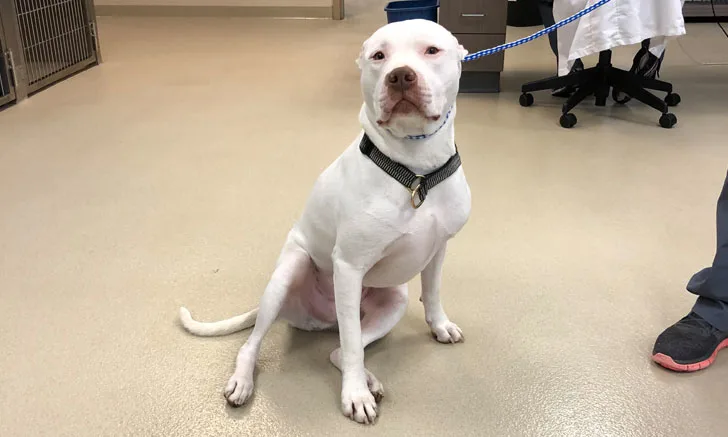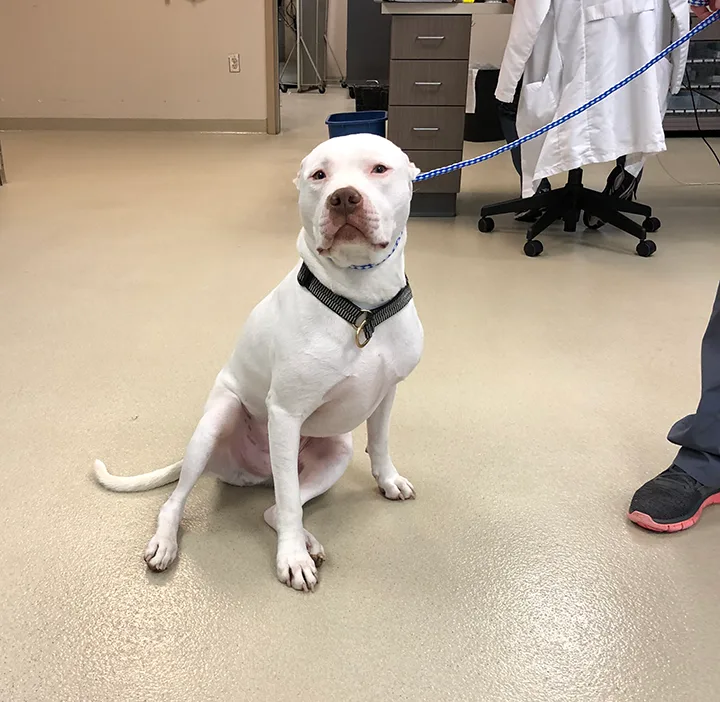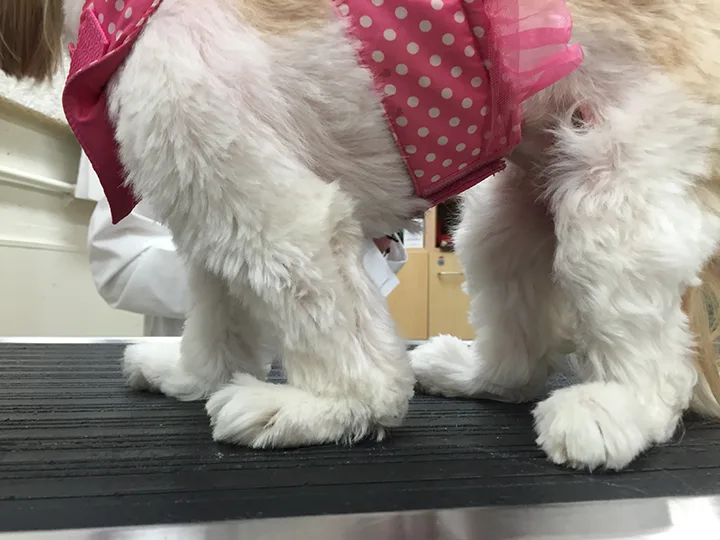Top 5 Signs to Watch for During an Orthopedic Examination
James Howard, DVM, MS, DACVS, The Ohio State University
Nina R. Kieves, DVM, DACVS-SA, DACVSMR, CCRT, The Ohio State University

Orthopedic conditions can be challenging to diagnose, and patients with suspected disease should always undergo comprehensive orthopedic and neurological examinations that include a full gait analysis (ie, watching the dog walk and trot toward you, away from you, and from the side). Familiarity with common presenting signs is essential to successful diagnosis, as is the ability to differentiate between signs of orthopedic, neurologic, and systemic diseases.
Following are the authors’ top 5 signs of disease to look out for during a complete orthopedic examination.
1. A Positive Sit Test
Cranial cruciate ligament rupture (CCLR) is one of the most common canine orthopedic conditions and often warrants medical therapy or surgical intervention.1 The high incidence of CCLR and its associated treatment costs emphasize the importance of appropriate diagnosis and treatment.2 Observing the patient’s behavior and watching his or her gait in a stress-free environment can provide important diagnostic information.
For example, animals with CCLR avoid flexing the stifle when attempting to sit and place the affected limb to the side (see Figure 1), compared with patients with hip dysplasia, who typically sit squarely (see Figure 2). These signs, along with common orthopedic examination findings of medial buttress, joint effusion, positive cranial drawer, and positive tibial compression test, can result in definitive CCLR diagnosis prior to diagnostic imaging.

FIGURE 1
Note the position of the patient’s right pelvic limb. This positive sit test suggests a right cranial cruciate ligament rupture.
2. Bunny-Hopping
Hip dysplasia is a routine cause of small animal orthopedic surgical referrals. However, 32% of dogs with suspected hip dysplasia are subsequently diagnosed with CCLR,3 so the importance of a targeted gait analysis cannot be overemphasized. Patients with hip dysplasia may exhibit a classic “bunny-hopping” gait in which both pelvic limbs move forward in unison and then extend in unison as the animal advances through the locomotion phases (see Video). Dysplastic hip joints are characterized early by joint laxity; the biomechanics of these abnormal joints are complex, with resultant osteoarthritis and orthopedic pain.
“Bunny-hopping” alleviates the pain by centralizing and distributing the forces associated with walking or running between both pelvic limbs simultaneously. This gait pattern is not pathognomonic for hip dysplasia but should direct further investigation of the patient for hip abnormalities.
3. Down-On-Sound & Head-Bob
Thoracic limb lameness can be a frustrating diagnostic challenge, even for an experienced veterinarian.4 Determining which limb is most affected can be difficult in patients with subtle clinical signs. Gait analysis must include watching the patient walk forward and trot away. Patients with thoracic limb lameness will favor the affected thoracic limb by transferring weight to the contralateral unaffected side, which results in the “down-on-sound” or “head-bob” phenomenon most evident when the patient is walking/trotting toward the observer.
For example, a patient with left thoracic limb lameness will lift his or her head each time the left paw strikes the ground to minimize the weight placed on the painful limb. As the right, unaffected limb strikes the ground with the next step, the patient compensates by placing more weight on this limb, and the head drops vertically toward the ground. Subtle lameness may prove occult during a visual examination and will require further diagnostics.
4. Walking on Eggshells
Comprehensive evaluation is warranted in every orthopedic examination to rule out other potential causes of gait abnormalities.
For example, a lame dog with multiple swollen joints may have a systemic disease such as immune-mediated polyarthritis (IMPA), an inflammatory process affecting more than one joint with no underlying infectious cause.5 Patients with IMPA often display a painful and stilted gait that resembles walking on eggshells. (See Video 2.) Additional clinical signs include joint swelling, pain on palpation of the affected areas, abnormal joint conformation or “breakdown” of distal joints (ie, tarsi, carpi) (see Figure 3), and systemic signs (eg, fever, lethargy, lymphadenopathy, decreased appetite).6

Note the breakdown of the carpi and tarsi, which suggests a systemic disease such as immune-mediated polyarthritis.
5. Ataxia
Differentiation between orthopedic and neurologic conditions is imperative when making treatment recommendations. Patients with orthopedic disease show signs of pain and discomfort but do not exhibit ataxia. Patients with ataxia are uncoordinated and have inconsistent foot placement when ambulating, which usually indicates an underlying neurologic condition. (See Video 3 and Figure 4.) Patients with orthopedic disease maintain spatial awareness and place each foot in a consistent, coordinated manner throughout locomotion. (See Figure 5.) Interpretation of a neurologic gait analysis must be integrated with a comprehensive orthopedic examination, as approximately 50% of dogs with a CCLR will rupture the contralateral side within 6 to 17 months of initial diagnosis.3 Dogs with bilateral CCLR can present with signs resembling neurologic disease.

FIGURE 4
The inconsistent placement of the feet is typical of a patient with ataxia.
Conclusion
Complete orthopedic and neurologic examinations are key in determining the source of a patient’s lameness. Neurologic disease, and even systemic disease (eg, IMPA) can be easily confused with true orthopedic conditions. Gait analysis can be very helpful for patient assessment; the 5 signs can help point you in the right direction when they are correlated with physical examination findings.
This article originally appeared on VeterinaryTeamBrief.com.